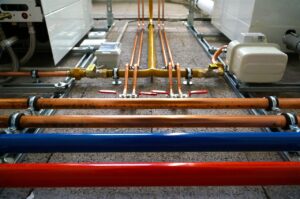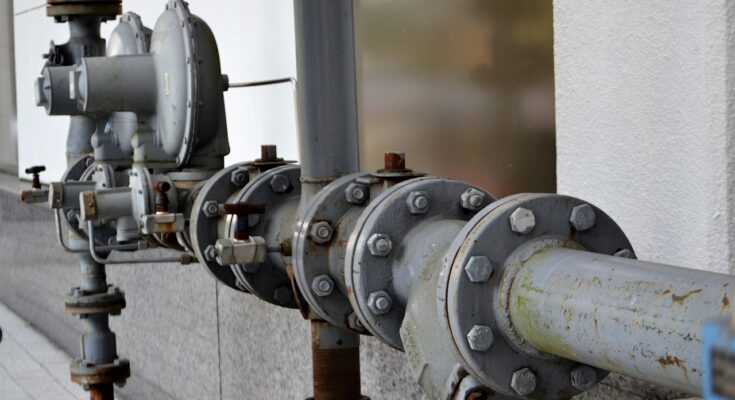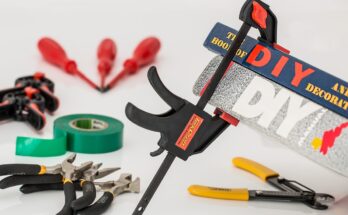The water supply system serves a crucial role in dishwashing and showering. For this reason, the maintenance of plumbing system is essential. Controllers of these structures do face a lot of damage due to water leakage, which results in additional bills that could have been avoided if cared for. The correct plumbing maintenance, along with appropriate measures, ensures value preservation.
The preservation of plumbing, appliances, pipes, and the overall system does require some attention and knowledge. The outcome is advantageous and justifies the application of basic procedures.
1. Be careful of where and how you dispose of garbage.
Taking care of the plumbing in the kitchen and bathroom starts at the drain. Not many homeowners consider what goes in and out of the plumbing system and are careless with disposing of food remains and ingredients.
Solution:
Apply straining nets (aka strainers) and dispose of fats, oils, and grease appropriately. A foolproof method is saving them in containers and throwing them away later.
2. Look for water leak signs periodically.
Although a minor leak may not seem significant, it can gradually waste several gallons of water, which significantly increases your bills. Even worse, undetected water leaks can cause mold, wood rot, and damage to the house structure.
Inspection Tip:
Check for water damage every month. Look under sinks, behind toilets, and around the water heater for dampness, corrosion, or any stagnant water. If you notice any signs, please address the situation promptly.
3. Find the Primary Water Shutoff Valve
Reduction of possible damages during plumbing system emergencies requires knowing how and where to turn off the water supply. Each home contains a main shutoff valve located around the water meter or where the main water pipeline enters the residential structure.
Expert Suggestion:
Confirm the valve can be turned with reasonable force at least once every twelve months. In the event it is sticky or corroded, it may be better to replace the valve.
4. During winter months, avoid water pipes freezing.
Freezing water pipes is a widespread issue in colder environments. The leading cause of pipe bursts is expansion of water due to freezing.
Suggestion for Prevention:
Wrap any accessible insulated pipes present in attics, basements, and crawl spaces.
Allow faucets to release thin streams of water during low-temperature spells.
Remove cupboard doors for wider air circulation to hot air, reaching water pipes to warm while aiding in heating water pipes in cupboards.
5. Set the flushing of your water heater to no less than once every year.
Infrequent flushing of the tank gives rise to sediments forming in it, which in turn will render the water heater less capable and may damage it. Water flushes keep the flow of hot/warm water through the tank uninterrupted for optimal heat.
Blundering Possibility:
Flush out the heater with a few gallons of water via a garden hose attached to the heater’s drain valve at its base. Consider consulting a handyperson if this seems daunting to you.

6. Control Water Moderately
Using controlled water flow can relieve strain on plumbing. High water pressure can feel wonderful in the shower, but using it continuously can lead to burst pipes, leaks, or old, worn-out faucets over time.
Suggestion:
Having a pressure measuring gauge can help check the water pressure at 40–60 psi system’s water pressure. Higher water pressure will require a pressure-reducing valve.
7. Be Cautious With Sewer Lines
Age, tree roots, or the presence of non-biodegradable objects can significantly improve the chances for sewer lines to get clogged and overflowing. The use of slow water drains and frequent clogs can be a valuable indicator for larger problems in your property.
What Actions You Can Take:
Schedule professional help for cameras and sewer inspections on older houses every few years.
Do not use anything apart from toilet paper for flushing where need be.
8. Plan Regular Checkups with an Expert
Licensed plumber experts focus on issues such as wear and tear, corrosion, or potential failures that silent systems may encounter.
Complete Remarks
You don’t need a degree to manage a plumbing system. All you need is a bit of know-how, frequent checkups, and a proactive attitude toward taking steps.
With proactive approaches, you not only end up saving water and finances but also eliminate the stress.
Instead of just obscurely treating your plumbing system in any manner you fancy, start treating it with care and tact. This ensures your pipes remain in top quality, as well as protecting the comfort and safety of your household.
Also read about :Improve Your House: Small Adjustments



One Comment on “How To Maintain Home’s Plumbing System”